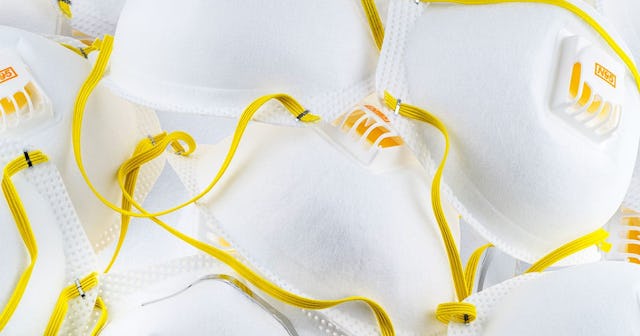CDC: Face Masks With Valves Or Vents Don't Prevent Spread Of COVID

A new warning from the CDC says to stop wearing 3M masks with built-in valves or vents
By this point, it’s pretty clear that one of the best things we can do to protect ourselves and others from the coronavirus is wearing face masks whenever we’re out in public. But it’s important to remember that this disease is still new, and scientists are still learning about it. And now, the CDC has updated its face mask recommendations, warning people that masks that have built in valves or vents aren’t actually effective in helping slow the spread of the virus.
One extremely popular model of mask that has a built-in valve is made by 3M. Its high-tech appearance makes it a type of mask many people have been choosing to wear as they go about their daily business. But this kind of mask is actually meant for construction workers to wear in hot and dusty environments. When it comes to slowing viral particles when the wearer exhales them? It doesn’t actually work for that.
A brochure on 3M’s website illustrates how these types of masks actually work — by allowing hot, humid air to escape through the valve.
3M
“The purpose of masks is to keep respiratory droplets from reaching others to aid with source control,” the CDC’s new guidance reads. However, masks with one-way valves or vents allow air to be exhaled through a hole in the material, which can result in expelled respiratory droplets that can reach others. This type of mask does not prevent the person wearing the mask from transmitting COVID-19 to others. Therefore, CDC does not recommend using masks for source control if they have an exhalation valve or vent.”
The point of face coverings during the pandemic is to help stop tiny, aerosolized viral particles and droplets from escaping from your respiratory tract when you breathe, talk, cough, or sneeze. Scientists say to that end, any cotton face covering will work — though it’s best if it has at least three layers of cotton fabric. These face coverings have the added bonus of being cooler and more comfortable to wear than form-fitting 3M masks, with or without valves.
These updated guidelines from the CDC come right on the heels of another agency report that found neck gaiters, a popular face covering made of thin-stretchy fabric, are also ineffective for slowing the spread of the coronavirus, because they break up larger particles into smaller ones that can travel farther and remain airborne for longer.